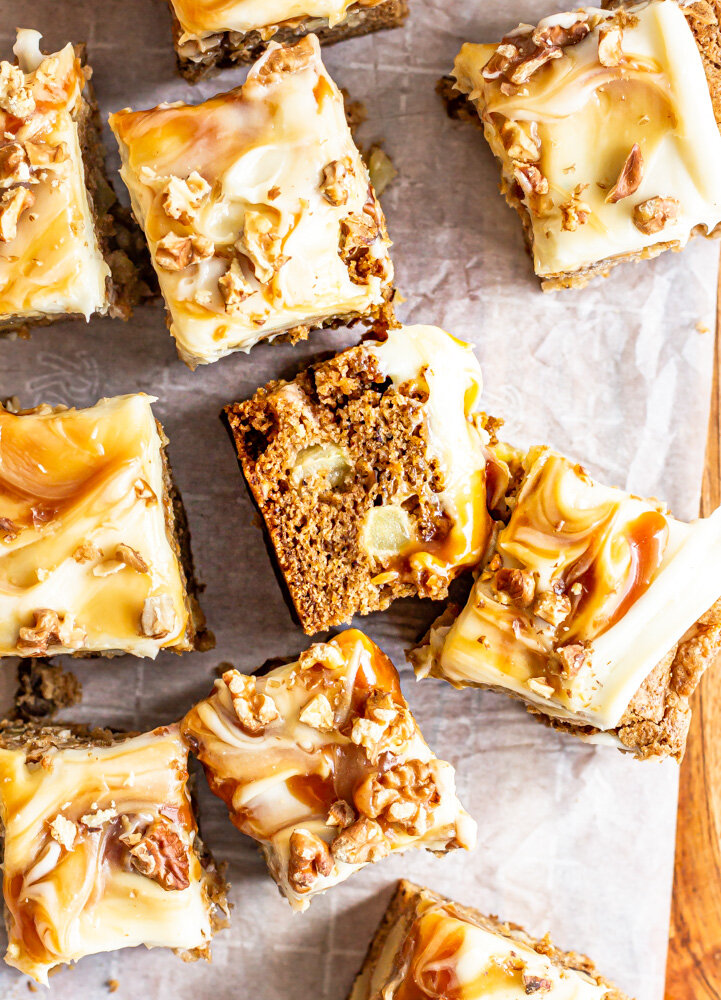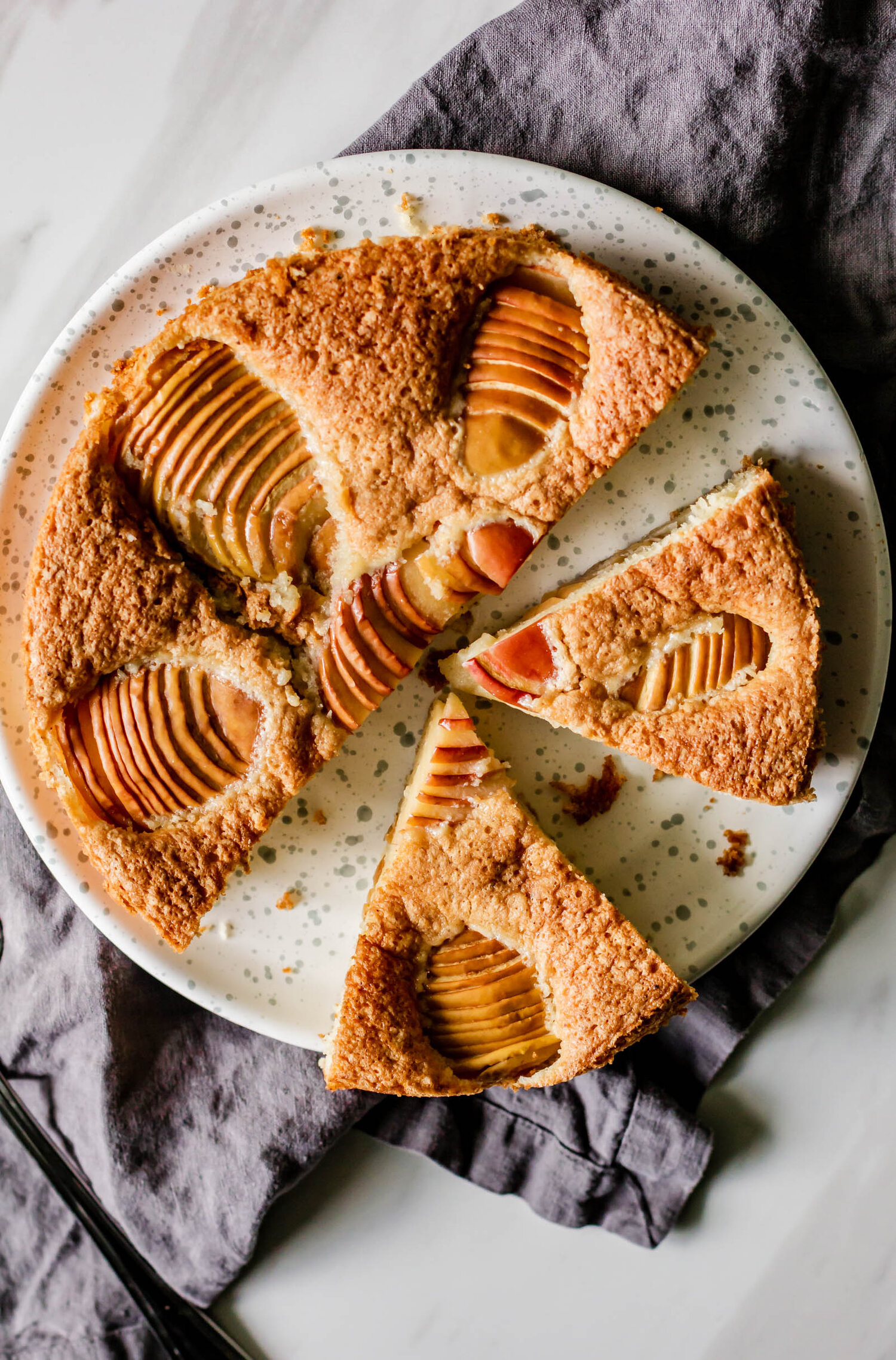Caramel Brownie Ice Cream
/Last week, our local weatherman said that temperatures would be in the 50s and 60s overnight on Saturday. This was not true. I stepped outside at 6:15 on Saturday morning to catch a gust of that crisp, fall air that I have been longing for since August and I was massively let down. Sure, there was a little breeze in the air and the temperature was slightly cooler than it has been, but by 9 am, we were back to the 80s and I was thinking about ice cream and rose. So in case you also live in a climate that refuses to embrace fall weather, here is a break from your regularly scheduled Instagram feed of stews and pumpkins.
This ice cream is more of a template than a full recipe and you should definitely experiment and make it fit your mood. Earlier this year, I read about this churn-free ice cream base that only called for two ingredients and I admit, I was hesitant. When finally decided to give it a whirl, I was upset that I hadn’t tried it sooner. Think of all the ice cream I could have been making! Fold a can of sweetened condensed milk into cream whipped to medium peaks and viola! Add whatever mix-ins you want, freeze overnight, and the next morning, you can eat ice cream for breakfast. All around, a great situation to be in.
I had a few leftover brownies hanging out in my refrigerator from a previous order and a little Tupperware of butter caramel from last week’s apple cake that I decided to swirl into my ice cream. I included the recipes for those things at the bottom, but feel free to use your favorite brownie or some crumbled Oreos, or any cookie-like treat you have laying around your house. And even if you are fortunate enough to be experiencing flannel-shirt and pumpkin patch weather, remember that it’s never too cold for ice cream.
Caramel Brownie Ice Cream
Ingredients:
For the ice cream:
2 cups heavy cream
1 (14 oz) can sweetened condensed milk
1/4-1/2 cup butter caramel
For the vegan brownies:
1 cup flour
6 T cocoa powder
1 tsp salt
11 oz dairy free chocolate, chunked into pieces
1 cup coconut oil
1 tsp ground espresso
1 cup sugar
1 cup brown sugar
6 T water
5 flax eggs (5 T ground ground flaxseed mixed with 1 cup hot water)
Procedure:
To make the brownies:
1. Preheat oven to 350 degrees, grease a 9x13” pan and line with parchment paper.
2. In a medium bowl, toss together flour, cocoa powder and salt and set aside. Stir together flaxseed hot water and place in refrigerator to set up while you prepare the rest of the brownies.
3. Combine sugar, brown sugar, and water in a medium saucepan and set over medium heat. Cook, stirring occasionally, until sugars are beginning to dissolve and you have a thick syrup. Meanwhile, place chocolate, coconut oil, and espresso powder in a large bowl. When your syrup is ready, carefully pour it over the chocolate mixture and allow to set for 2-3 minutes. Whisk everything together until combined and let come to almost room temperature.
4. Whisk cooled flax eggs into chocolate mixture and then sprinkle dry ingredients over the top. Fold in dry ingredients until no streaks remain.
5. Pour mixture into prepared pan and bake about 30-35 minutes, or until a toothpick comes out clean. Let cool completely before cutting.
To make the ice cream:
Cut about a 1/4 of the brownies into 1/2” cubes. Place on a sheet pan and freeze while you prepare the rest of the ice cream.
If the caramel is cold, reheat it in the microwave in 30-second intervals until loosened. Let cool slightly (it should be room temperature when ready to use).
In the bowl of a mixing fitted with the whip attachment, whip cream to soft peaks.
Place the sweetened condensed milk in a separate bowl. Fold the whipped cream into the sweetened condensed milk until just combined. Sprinkle in the brownie chunks (reserve a few for the top) and fold them in. (You can use as much or as little brownie as you want!)
To assemble the ice cream:
1. Line a loaf pan with plastic wrap. Pour half of the ice cream mixture into the loaf pan. Spoon half of the caramel over the top of the ice cream and swirl with a knife. Pour the rest of the ice cream into the loaf pan and spoon the rest of the caramel on top. Swirl with a knife and sprinkle the last of the brownie pieces over the top. Wrap the whole pan in plastic wrap and freeze overnight.










